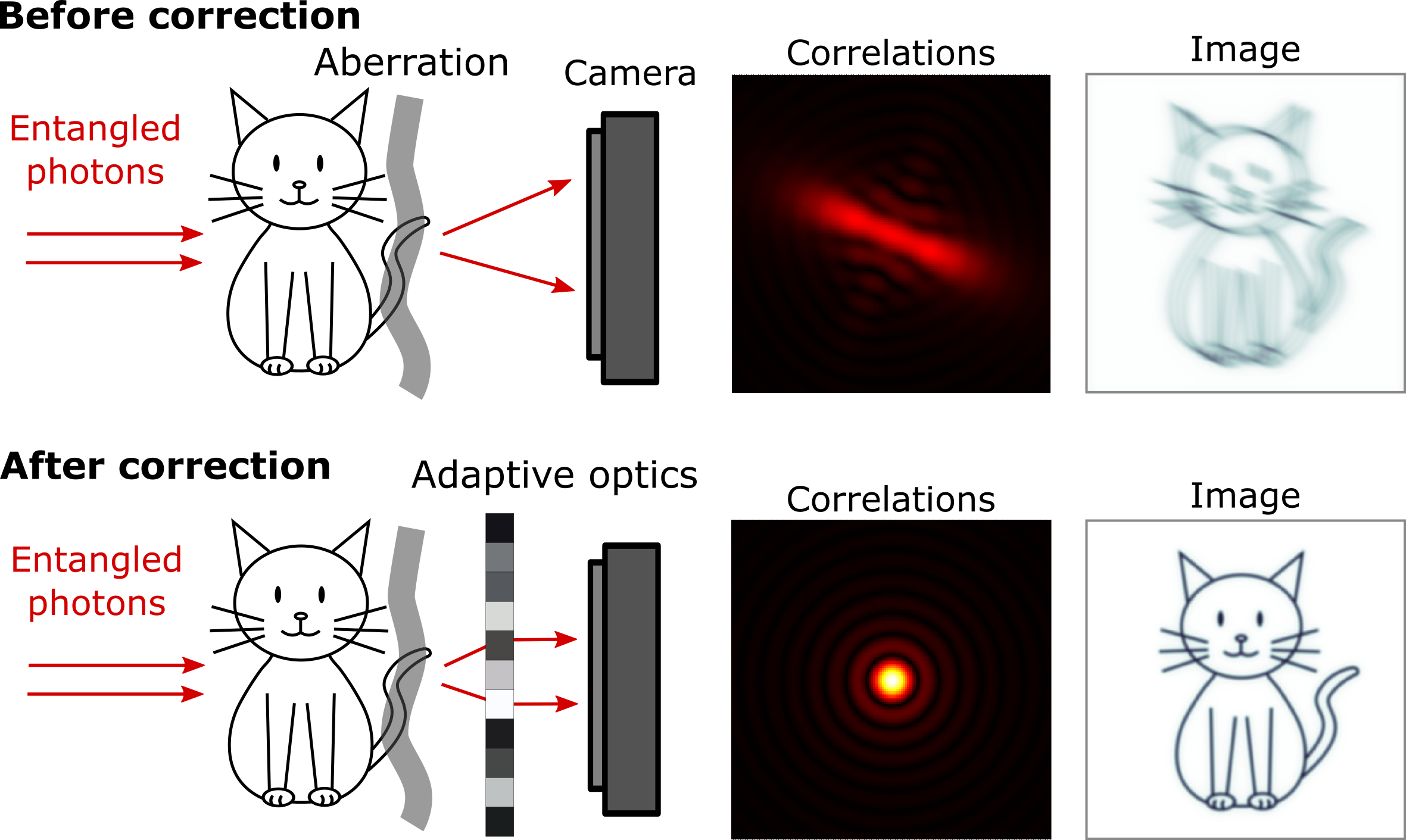Entangled photons revolutionise imaging technology
Researchers from Glasgow University have harnessed the power of quantum physics to address a longstanding challenge in microscopy, opening doors to a brighter future for advanced microscopes.
In a press statement, Glasgow University says that researchers from the United Kingdom and France have revealed their use of entangled photons in a novel process called quantum-assisted adaptive optics. This innovative technique corrects aberrations affecting microscope images, showcasing its effectiveness in capturing high-resolution images of biological test samples, such as the mouthpiece and leg of a honeybee.
The researchers also demonstrate successful aberration correction for samples with three-dimensional structures, a scenario where classical adaptive optics often fall short. Their approach involves utilising entangled photon pairs to illuminate samples, enabling the simultaneous capture of conventional images and measurement of quantum correlations.
The statement adds the entangled photon pairs experience degradation in their entanglement, manifested as quantum correlation, the researchers leverage this degradation in quantum correlations to unveil information about the aberrations. Through advanced computer analysis, they demonstrate the correction of these aberrations. The revealed information from the correlations facilitates a precise characterisation of aberrations, paving the way for correction using a spatial light modulator. The Research paper highlights that these correlations contribute to the generation of clearer and higher-resolution images compared to traditional bright field microscopy techniques.
“Complex samples like biological tissues can be challenging to image using conventional approaches to microscopy, where the bright star technique can fail because there are rarely natural bright spots in human or animal tissue,” says Patrick Cameron, the research paper’s first author from the University of Glasgow’s School of Physics & Astronomy.
“This research shows that quantum-entangled sources of light can be used to probe samples in ways that are much more challenging, if not impossible, with traditional microscopy. Identifying and correcting aberrations and distortions with entangled photons allowed us to produce sharper images without the need for a guide star,” he adds.
“This new technique could be broadly applied to all kinds of conventional optical microscopes to help improve imaging of a wide range of samples. We demonstrated its effectiveness on biological samples, suggesting that it could be used in medical and biology sectors in the future,” says Hugo Defienne, the research paper’s last author.
“It could also be applied to the emerging field of quantum microscopy, which has tremendous potential to produce images beyond the limits of classical light,’’ he adds.
“The next generation of cameras and light sources are likely to help improve the speed which images can be resolved using this technique. We will continue to work on refining and developing the process and look forward to finding new real-world applications for advanced microscopy as we progress,” says the co-author of the research paper Professor Daniele Faccio, who leads the University of Glasgow extreme light research.
The research received support from the Royal Academy of Engineering Chairs in Emerging Technologies Scheme, the Engineering and Physical Sciences Research Council (EPSRC), the European Union Horizon 2020 research and innovation programme, the European Research Council Starting Grant, and the SPIE Early Career Researcher Accelerator fund in Quantum Photonics.













